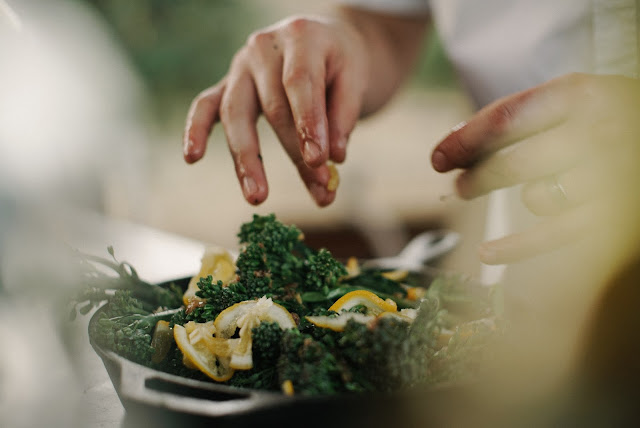Easy Tips to Elevate Your Home Cooking
If you love to cook at home, then you’ve probably tried to recreate some of your favorite restaurant dishes and found they don’t turn out quite the same. This is because most recipes don’t cover the small details that make all the difference. Here are some easy tips to elevate your home cooking.
 |
| Image from Unsplash |
As well as tasting good, salt is what makes the flavors pop. Salt helps to link dynamic flavors in a dish. A good rule of thumb is to salt moderately at the beginning of cooking, then taste the dish before you serve it, and adjust the salt if you need to. Not all salts are the same, so rely on your palate rather than measuring out a specific amount (unless you’re baking).
Think about the dish fits into the rest of the meal. Are you making with a side dish that would be better without heavy seasoning to go with a salty main dish, for example?
Make sure you use a good quality salt. You can find all kinds of gourmet food for sale online, including good salt.
Reduction
Reduction is an important part of any dish that has a sauce or a broth. Reduction helps to thicken the cooking liquid. Unlike thickening with something like flour, reducing a liquid strengthens the flavors rather than depleting them. This is what makes slow-cooked stews taste so good.
Low and slow is the rule of thumb here, and this means putting some time in. It’s worth the time though. A good understanding of reduction will let you create exactly what you want in a dish. Pay attention to how flavors concentrate when you reduce something.
Chopping
It looks cool to be able to dice your onions at speed, but consistency is more important when you’re chopping. Knife skills are often overlooked in cooking, but the way you chop your ingredients will have an impact on the mouthfeel and shape of an ingredient, which also impacts how the person eating it perceives the finished dish, and how fast the ingredients cook and look when you’re done. Think in advance about what textures, flavors, and shapes you want, and how those will play on the palate in the finished dish. Use this to decide how you want to chop things.
Succession Of Ingredients
The order in which your ingredients are cooked, whether in the same pan or separately, can be what ensure that all the parts of your dish turn out as good as they can. Knowing the speed at which different parts of a dish cook at will let you decide which order to cook them in. For example, carrots can take a while to overcook in a hot wok, whereas sugar snap peas will overcook quickly. Sometimes it can help to cook different components at the same time, but in different pans, and then combine them at the end. The size and shape of your ingredients will also influence how they react to cooking and flavoring.








0 comments